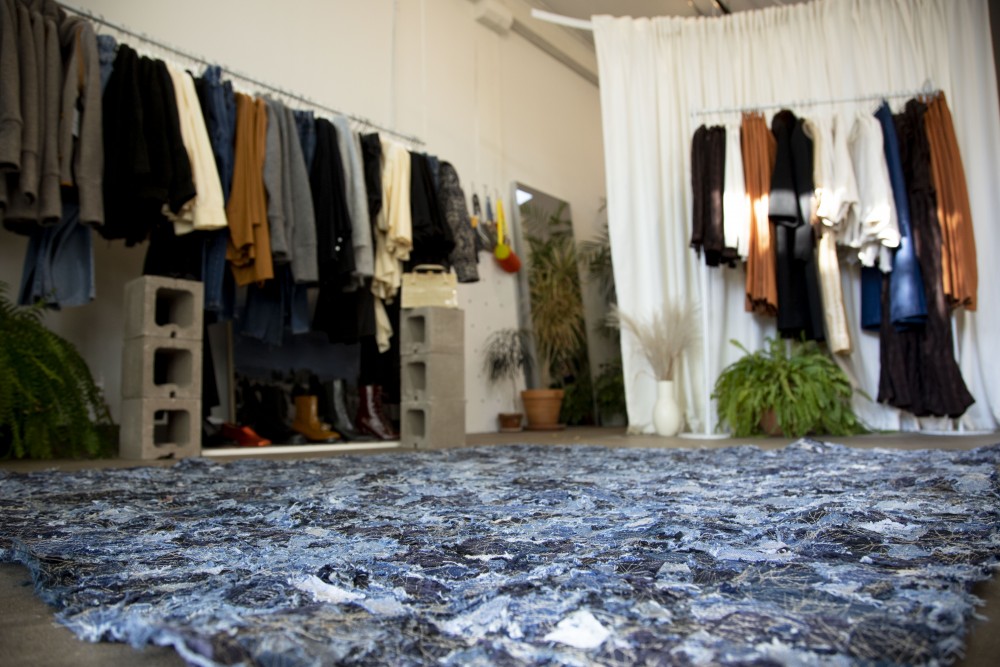With a focus on sustainability, a University of Minnesota alumna looked to current apparel design students to implement a zero-waste product line.
A year-and-a-half ago, owner of Marcy-Holmes clothing store Winsome Goods Kathryn Sieve was looking for a zero-waste method to make use of her material scraps. Sieve reached out to Lindsey Strange, a professor in the University College of Design’s Studio I, to work on a solution. With the help of Studio I students, Winsome Goods launched the “Zero” line of rugs using the scraps from this academic year.
“We wanted a way to re-purpose or recycle the scraps from the cutaway process so that it wasn’t just going to landfills,” Sieve said. “[Strange] had the idea of just putting it to her students by developing a project around it.”
Sieve, also a graduate of the apparel design program, started the project by inviting the Studio I students to tour her studio, where she told them about Winsome and created guidelines for the project. Each group was given a bag of scraps from Sieve’s studio and told to create a prototype of something she could sell in her store.
While groups came up with a number of solutions, none were cost-effective, Sieve said.
But students Anne Holmes and Kai Johnson helped inspire the technique to make a new textile from the scraps, which was eventually used to produce the rugs. Their technique includes using a water-soluble paper in order to stitch together scraps of many different sizes and shapes to create a textile.
“[Sieve] responded to the prototype that we showed her a lot, but I didn’t really think about it much after that,” Holmes said. “I didn’t know if she was going to do anything with this information that we presented, so it was a total surprise later on.”
From there, Sieve and her employees spent more than a year adapting the technique for different products, like bags and shoes, to decide what made the most sense for the business to sell. They landed on the idea of creating rugs because while the process is still very labor intensive, the product warrants the retail price needed to be cost-effective.
Sieve said the rugs are in high-demand and currently have a wait-list. If the store’s scraps cannot keep up with demand, Sieve said the store would consider reaching out to other apparel producers.
“The project exists in order to save scrap fabric from landfills, and it only makes sense for us to use our scraps,” Sieve said. “We’re not going to cut into useful fabric that could be made for clothing or other products in order to make these rugs.”
Sieve’s project has inspired apparel design students at the University to seek sustainability options in their classes and in their future careers. Holmes and Johnson said it is crucial students learn about sustainability in the design process as the industry has become more and more wasteful.
“This project was really interesting to me just because I now try to focus on sustainability in all of the projects that I do, so it was a good introduction to how on a small scale, different strategies can be effective,” Johnson said.







